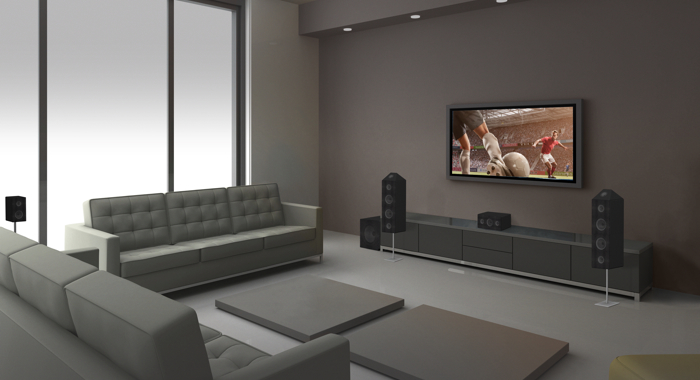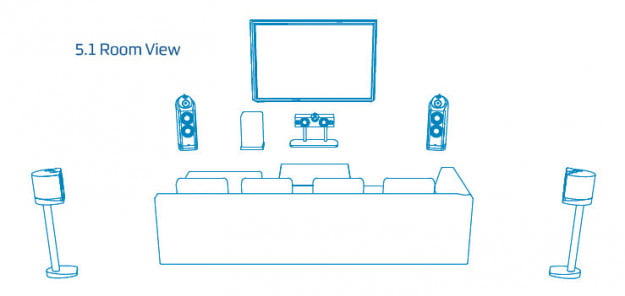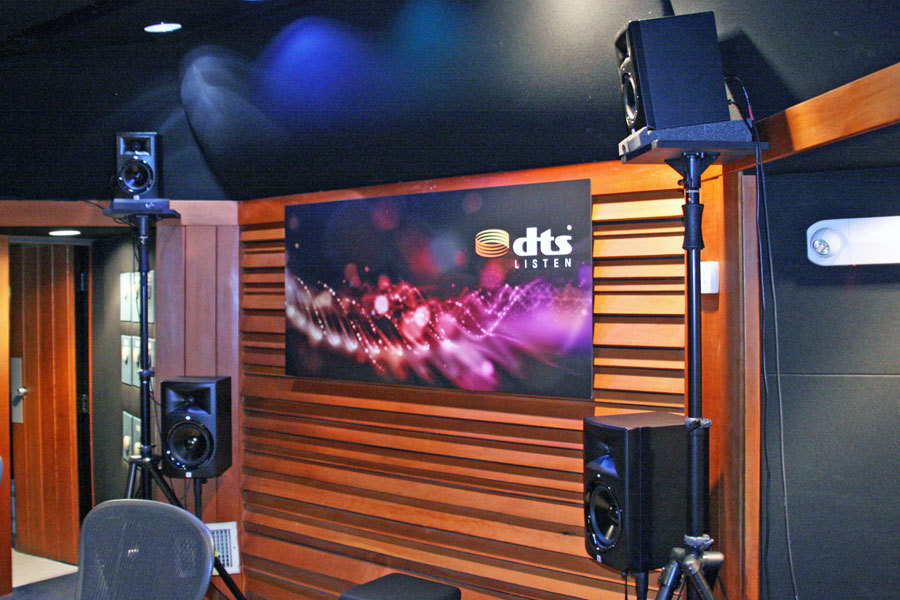
The Dolby vs. DTS 5.1 surround sound argument is a hotly debated issue that’s been at the forefront of many audiophile discussions. Some people are of the opinion that DTS Digital Surround is better in terms of sound quality than the Dolby Digital is. Read on to find out if this is true.
One of the reasons why DTS surround sound is considered better is probably because it features a higher data rate encoding. Other people say that Dolby Digital is more superior; hence, you should expect a better sound quality. Before diving into the bone of this debate, it’s important that you look into the meat through three definitions.
What is Surround Sound?
What is surround sound – Dolby As Fast As Possible
Modern slim TVs provide you with a depressingly lifeless, flat stereo sound experience with no bass at all, which dampens your blockbuster movie watching experience. Since most films are created with surround sound in mind, you are only getting a small portion of the picture. In fact, a surround sound system throws you into the heart of the action and brings the cinema experience closer to you.
In addition, both systems breathe life into sports broadcasts, radically growing PC gaming, and TV shows via home theaters. A basic surround sound system has five speakers and a subwoofer that provides a thumping bass. Apart from the speakers, the system includes a DVD or Blu-ray player and an AV receiver for decoding audio signals and sending the different sounds to the right speakers in the setup.
What are Dolby and DTS?

Ultimate surround sound guide: Different formats explained
Today, surround sound is a standard inclusion you will find in most home theaters. The most popular surround system technologies you will find mentioned, such in this best home theater system review, are Dolby Digital 5.1 and DTS. To understand the differences between both technologies, you need to take a back look at their basics.
While laser discs were first invented in 1978, it was only in 1983 when they featured more storage space than VHS tapes. Dolby Labs created AC-3, better known as Dolby Digital, to take advantage of the space and offer higher bandwidth sound. The technology also facilitated adding of a lower-frequency effect channel, which is the “.1” in 5.1 handled by a subwoofer.
In 1993, Digital Theater Systems (DTS) came along with its own competing digital surround sound technology that first featured in the movie Jurassic Park. At first, the technology was available only on an exclusive selection of discs before trickling down to DVD and LD. DTS features a higher bit rate, which delivers more audio information.
Dolby Digital Vs. DTS: The Similarities

Both technologies offer you the benefits of surround sound via codecs available for 5.1, 6.1 (which are rare), and 7.1 home theater setups. Both technologies are used by studios to compress dense files for multi-channel audio support for common applications like TV shows and movie playback via Blu-ray, DVD, cable and satellite TV systems. Your receiver, during playback, then decompresses the files.
Both audio standards also implement extra technologies like encoders specifically for enhancing stereo, an older Pro-Logic standard for simulating surround sound. The codecs also convert down or up to match the number of speakers, enhance surround sound and other tasks.
The formats make use of compression technology to save space on DVD, Blu-ray or during streaming. You will also come across lossy DTS and Dolby Digital, which means that audio is degraded to a certain degree from the original source. Others offer lossless studio level performance while offering some sort of space-saving compression.
Dolby Digital Vs. DTS: The Differences

Comparing Dolby Digital vs. DTS surround sound in home theater applications reveals that both formats are close together in terms of audio performance. DTS claims that it’s capable of achieving better audio fidelity from an original un-coded source at 1.5 Mbits/s. On the other hand, Dolby Digital also claims its able to achieve similar perpetual transparency results at a maximum of 640 kbits/s.
However, media used in your home theater do not always support the max raw-bit rate that each format supports. For instance, DVD-video format restricts Dolby Digital sound to 448 kbits/s, and 768 kbits/s for DTS audio.
Therefore, you are likely to achieve a better surround sound experience than in a movie theater with a Dolby Digital soundtrack when using a properly equipped home theater. On the other hand, DTS sound in the home may not achieve the same level of sound quality available in a DTS movie house installation because of reduced bit rates.
In addition, each format brings you different tier standards,
For Dolby Labs;
- Dolby Digital: The 5.1 channel sound available at 640 kbits/s
- Dolby Digital Plus – The 7.1 channel at 1.7 Mbits/s that is supported by services like Netflix
- Dolby TrueHD – Brings 18 Mbits/s lossless quality for Blu-ray discs in the 7.1 channel range
On the other hand, DTS features;
- DTS Digital Surround – At 1.5 Mbits/s with a 5.1 channel setup
- DTS-HD High Resolution – Bringing the 7.1 channel setup 6 Mbits/s
- DTS-HD Master Audio – With a 7.1 setup at 24.5 Mbits/s lossless performance
You can compare sound quality using the same audio format using different bit rates to determine if the same format sounds better in a movie house or home entertainment situation. Unfortunately, the decision is not so straightforward while examining different formats in a home application. To answer the original question of which format is better, it all depends on your individual overall experience.
Final Thoughts
If you are assembling your home theater from scratch, any new receiver is capable of supporting both DTS HD Master Audio and Dolby TrueHD. Blu-ray devices tend to stick to either Master Audio or TrueHD and default to compressed options like Dolby Digital 5.1 for alternative audio tracks. The DTS:X or Dolby Atmos are great options when you are looking for something truly cutting edge – as long as your receiver, speakers and movies support them.
In case you have to choose between two equivalent Dolby or DTS tiers and have no personal preference, choose the DTS for its higher bit rate. However, remember that actual audio quality difference is subjective.




